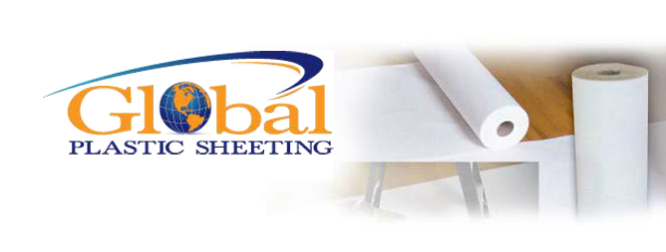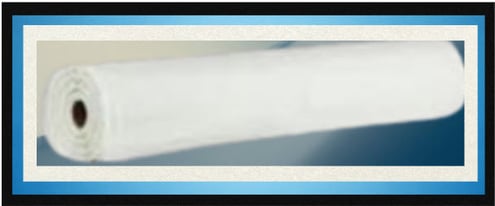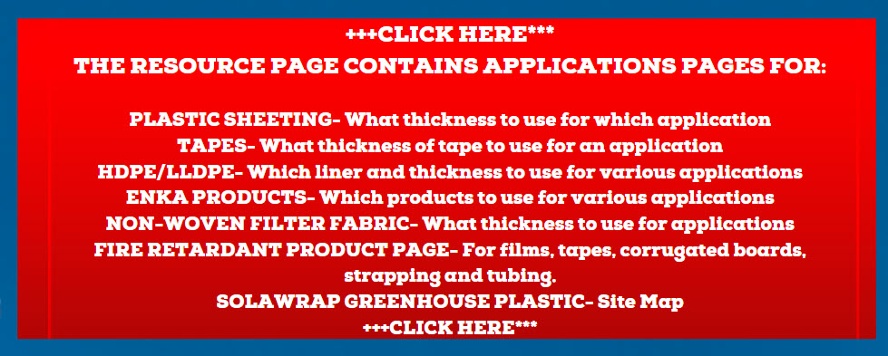 When do you use HDPE versus LLDPE?
When do you use HDPE versus LLDPE? 
LDPE, HDPE & LLDPE Plastic Sheeting – Made in the USA
Plastic sheeting manufactured in the USA ensures consistent quality, better regulatory compliance, and superior performance—especially when using virgin resin instead of recycled imports. One of the key factors in selecting the right American-made plastic sheeting is knowing which type of polyethylene fits your application: LDPE, LLDPE, MDPE, or HDPE.
Each type has different characteristics based on its molecular structure, affecting flexibility, strength, thickness range, and chemical resistance.
Why American-Made Polyethylene Matters
-
Build America, Buy America Act (BABA) compliant
-
Made using virgin resins—not recycled, contaminated blends from overseas
-
Consistent mil thickness, tensile strength, and UV stability
-
Supports U.S. jobs and ensures material traceability
Choosing U.S.-made plastic sheeting ensures you're not compromising quality for price, especially in demanding industrial, agricultural, and environmental applications.
Types of Polyethylene Explained
LLDPE – Linear Low-Density Polyethylene
-
Most flexible of the group
-
Strong tensile strength and excellent puncture resistance
-
Commonly used in pond liners, carpet protection film, and any application requiring stretch and impact resistance
-
Blended from LDPE with added linear structure for enhanced stretchability
-
Thickness typically ranges from 0.5 mil to 40 mil
-
Ideal where softness, elasticity, and tear resistance are essential
LDPE – Low-Density Polyethylene
-
Most widely used plastic sheeting material
-
Offers good flexibility and conformability
-
Often used in construction, agriculture, covers, and surface protection
-
Thickness range: 0.5 mil to 40 mil
-
Less puncture-resistant than HDPE or LLDPE
-
A homopolymer made solely from repeating ethylene monomers
MDPE – Medium-Density Polyethylene
-
Less common, but stronger and more chemical resistant than LDPE
-
Has a tighter molecular structure for improved tear and puncture resistance
-
Used in blended liners, especially for ponds and fluid containment
-
Balances flexibility and durability
HDPE – High-Density Polyethylene
-
Strongest and most chemical-resistant of all types
-
Least flexible but most UV-resistant—often needs no additional UV stabilizers
-
Ideal for industrial liners, canal covers, and secondary containment systems
-
Common thickness: 12 mil to 100 mil
-
Excellent for seaming in large-scale applications like tank farms and retention ponds
-
A homopolymer with tightly packed chains that block penetration and withstand extreme conditions
LDPE vs. LLDPE – What’s the Real Difference?
Though both are low-density films, LLDPE is a copolymer, made from ethylene and longer-chain olefins. This gives it superior stretchability, tensile strength, and impact resistance. LDPE, a homopolymer, is less stretchable and puncture-prone but is easier to process and remains widely used for general-purpose sheeting.
Which Type Is Right for Your Project?
-
Choose LLDPE for flexibility + strength (e.g., carpet films, blended liners)
-
Choose LDPE for general use with cost-effectiveness
-
Choose MDPE for chemical resistance + moderate strength
-
Choose HDPE when you need max durability, chemical resistance, and UV protection
Our U.S.-based team can help you determine the right plastic sheeting solution. We offer custom fabrication, mil-thickness options, and compliant products for federal and commercial projects.
Watch a short video to learn more about HDPE, MDPE, LLDPE and LDPE Here
|
Polymer |
Flexibility |
Color |
Impact Strength |
Chemical resistance |
Water Vapor barrier |
Gas Barrier |
Stress Crack |
Impact Resistance |
Density |
|
HDPE |
Flexible but more rigid than LDPE |
Natural color is milky white, semi-translucent depending on density |
Good |
Good |
Good |
Poor |
Good |
|
0.963 |
|
LDPE |
Very Flexible |
natural milky color, translucent |
High |
Good |
Good |
Poor |
Good |
Good |
0.910–0.940 g/cm3 |
|
LLDPE |
Very Flexible |
natural milky color, translucent |
High |
Good |
Good |
Poor |
Good |
Good |
0.93 |
|
Polypropylene |
Rigid for containers |
Opaque, natural grayish yellow in natural form. |
|
Good |
Excellent |
Poor |
Excellent |
Excellent |
0.905 g/cm3 |
|
Polyvinyl Chloride- PVC |
Flexible to Rigid |
Transparent to yellowish color in natural state |
Low |
Good |
Good |
|
Some |
|
1.35 -1.45 |
|
MDPE |
Good |
Translucent |
Good |
Excellent |
|
Poor |
Average |
Good |





